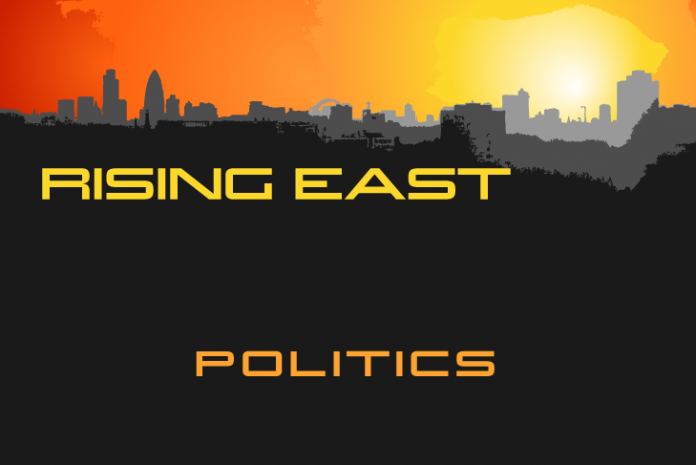Matt Wright claims Gandhi for the East End.
Mahatma Gandhi and Winston Churchill now stand close together – at least their statues are in close proximity, following last week’s unveiling of a model of the Mahatma in Parliament Square, Westminster, next to that of Churchill, Britain’s prime minister throughout the Second World War and icon of the ‘bulldog spirit’.
In real life they were miles apart; and Gandhi belonged in the East to a degree that Churchill never did.
When Gandhi arrived on damp British shores in 1931 to bargain with the King Emperor, he came not in a fine suit but dressed only in a loincloth, representing not only the cause of Indian independence but also the whole of the Orient in contrast to British imperialism.
‘I suspect the King will be wearing enough clothes for both of us,’ he was reported to have said. To which top-hatted Churchill quipped that this ‘half-naked fakir should be trampled by an elephant’.
Today, instead of Parliament Square, Gandhi’s statue would be more at home in East London, since this is where he chose to stay when obliged to visit the imperial capital.
In 1931 he took up residence in Kingsley Hall in the borough of Poplar, which was famously left-wing at the time.
Originally a nursery created by pacifist Muriel Lester, Kingsley Hall had already evolved into a ‘People’s House’ – a place where East Londoners could go to learn, pray, play, or receive community support.
During this three-month stay at Kingsley Hall, Gandhi met and mingled with some of London’s poorest, while travelling up West each day in an attempt to negotiate with Britain’s ruling elite over the future of India.
A devout Christian, years before Lester had visited Ghandi at his ashram in India. They got on well, united in pacifist beliefs and opposition to colonial rule; hence Lester’s invitation for Gandhi to stay in Kingsley Hall.
East London today is less overtly political than it was in the days of Gandhi’s visit. But it is far more multicultural, and its people continue to face many of the same social problems that Gandhi addressed throughout his entire lifetime.
This, surely, is the part of London town which is most in keeping with the spirit of the Mahatma.

